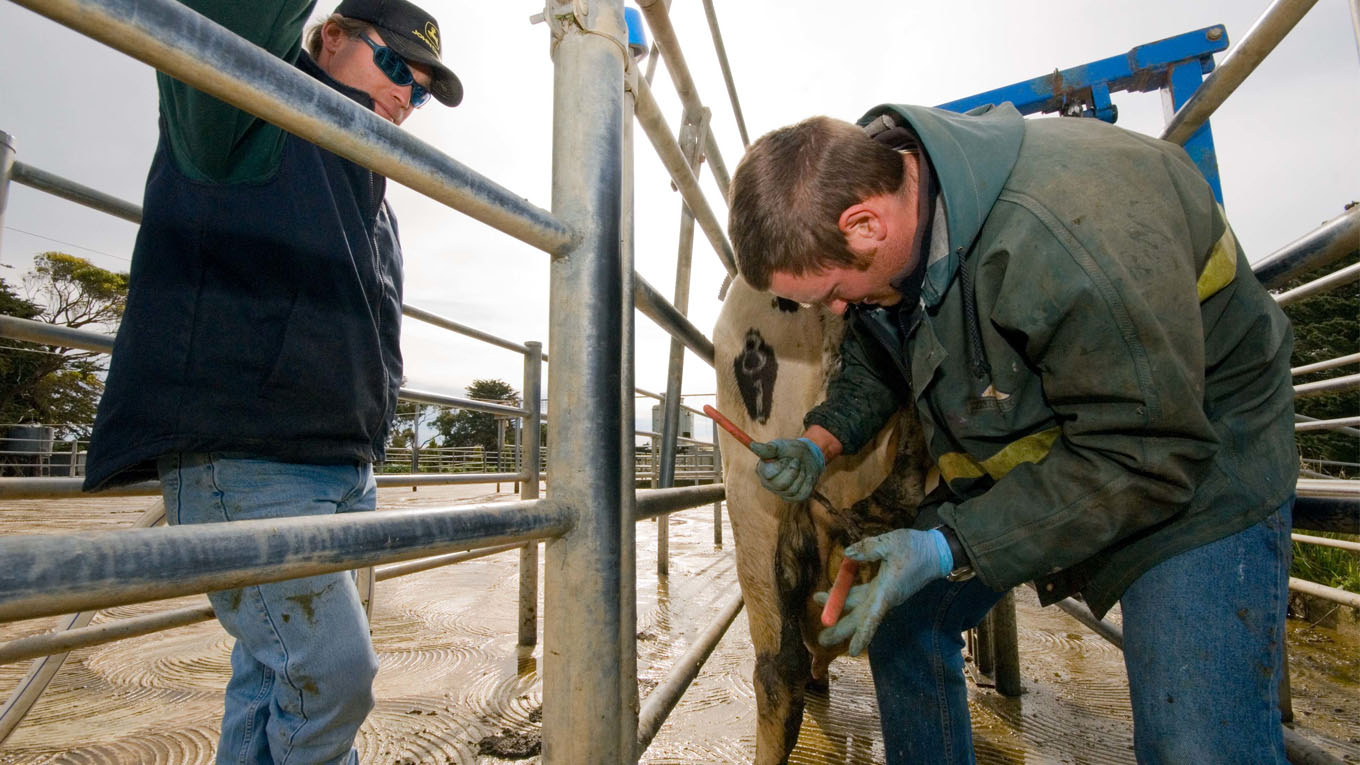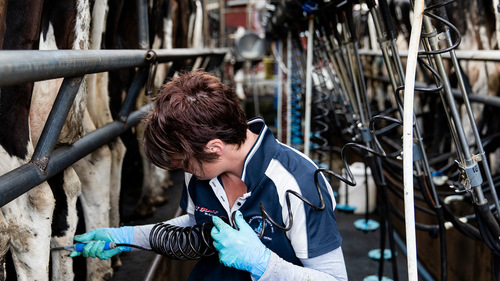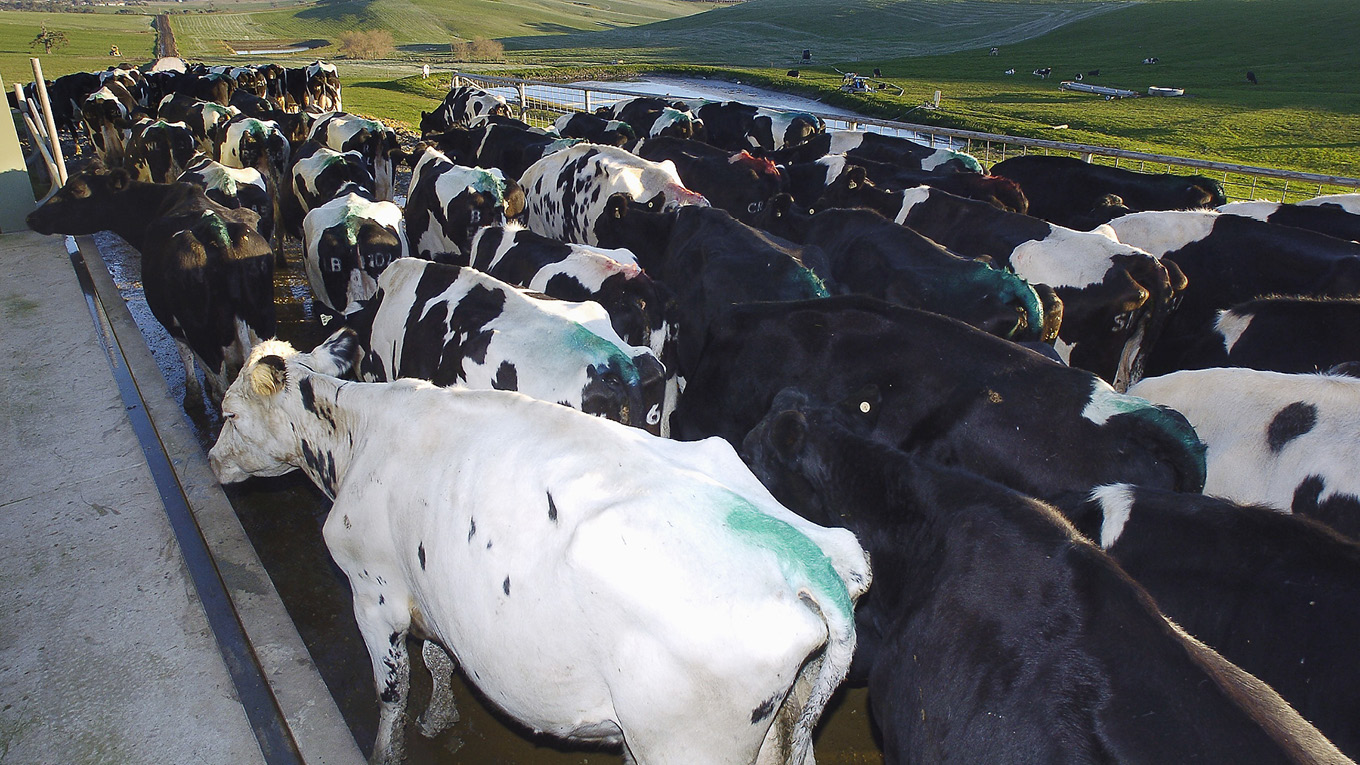Facial Eczema
Understanding how facial eczema occurs in cattle will help you better manage the disease.
Facial eczema occurs when cattle ingest spores of the fungus Pithomyces chartarum. The spores contain a toxin, called sporidesmin, which damages the liver and bile ducts. One of the first signs of facial eczema may be a sudden drop in milk production and a short period of diarrhoea.
However, often the most recognisable sign of facial eczema is inflammation of unpigmented skin and sensitivity to sunlight. This is called photosensitisation and occurs because the damaged liver is unable to breakdown products from the chlorophyll in grass, which builds up in the bloodstream.
Not all animals affected with facial eczema will show symptoms when liver damage has occurred. Research conducted in New Zealand suggests that for every one clinical case of facial eczema, there may be a further 10 cows with liver damage and reduced milk production.
Treatment and Prevention
The treatment for facial eczema is non-specific and is aimed at reducing pain and irritation associated with photosensitisation. There is no cure for facial eczema.
The fungus Pithomyces chartarum grows in the dead leaf material at the base of pastures in warm, moist conditions in late summer and early autumn. Monitoring pasture spore counts can assist with identifying periods of pasture toxicity and when to implement preventative strategies.
Feeding zinc is protective for facial eczema. To be effective, the cow's blood serum zinc levels need to be maintained in the range of 20-35µmol/L. This is most reliably achieved by feeding zinc oxide in pre-formulated pellets at the correct dose rate. Importantly, feeding zinc will not reverse existing liver damage.
Zinc supplementation of milking cows
Feeding the correct amount zinc oxide in grain/concentrates in the bail at milking can be very effective for facial eczema prevention.
If cows are underdosed (e.g. incorrect rate, settling out of the supplement, competition between cows) there may be inadequate protection from facial eczema.
Blood testing of cows in 12 herds during the 2019 season indicated that protective levels of zinc in the blood was most reliable when zinc oxide is fed in pelleted form. More inconsistent results were achieved when zinc was fed via a mineral dispenser or in a powdered form.
Serum (blood) zinc testing
It is recommended that farmers consider blood testing 10 cows in their herd 30-40 days after supplementation starts to check zinc levels are at the required level and adjust their program if required.
Experience in New Zealand indicates that accurate zinc supplementation at preventative levels is likely to be safe for up to 100 days. After this point, farmers should have blood testing repeated to minimise the risk of toxicity.
Zinc oxide boluses for dry stock
Other classes of livestock (e.g. bulls, heifers, calves, dry stock) are also at risk of facial eczema.
Controlled release, intra-ruminal zinc boluses commonly used in New Zealand are now available in Australia under a minor use permit (PER 90370).
Farmers wishing to purchase boluses should contact their veterinary clinic. Veterinarians wishing to source boluses can do so by contacting Luke Morison at Apiam Animal Health
If treatment with zinc oxide boluses, or zinc oxide supplementation is not possible, access to high spore count pastures may need to be restricted. Consider:
-
Not allowing these animals to graze pasture to a short length, even if it means leaving long residuals
-
Supplementing stock with hay or silage to reduce pasture intake
-
In more extreme situations, twice weekly drenching with zinc oxide is an option.
Spore monitoring
In response to strong industry feedback on the importance of the program, Dairy Australia and GippsDairy have re-instated the spore monitoring program. The latest spore count report can be found below. Spore count results for sentinel (monitoring) farms are updated in real time and can be found here. A comprehensive facial eczema and spore count report is also sent out fortnightly to the facial eczema subscriber list. To join the list, please get in touch with our team at Gippsdairy.
As there may be limited results for a region and large differences between farms in the same area and between paddocks on the same farm, farmers are urged not to rely on results from sentinel farms. Instead, they should be used to trigger spore counting on your own/clients’ farms if pasture spore counts are trending upwards of 20,000 spores per gram and/or weather conditions are favourable for sporulation.
Instructions for sampling pasture for facial eczema spore counting can be downloaded below. Pasture spore testing services are currently offered by the following veterinary practices:
-
West Gippsland Veterinary Centre (Warragul)
-
Gippsland Veterinary Group (Leongatha)
-
Yarram Veterinary Centre
-
Maffra Veterinary Centre
-
Bega and Cobargo Veterinary Clinic
-
Snowy River Veterinary Clinic (Orbost).
-
Nowra Veterinary Hospital
Veterinarians and advisors can learn more about facial eczema by reading A Review of Facial Eczema (Pithomycotoxicosis) - Report of the Dairy Australia Facial Eczema Working Group (updated 2013).
More details about zinc supplementation for facial eczema prevention are outlined in Preventing facial eczema in milking cows using zinc oxide in feed.


